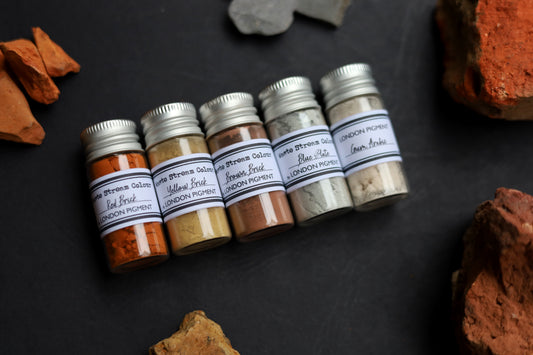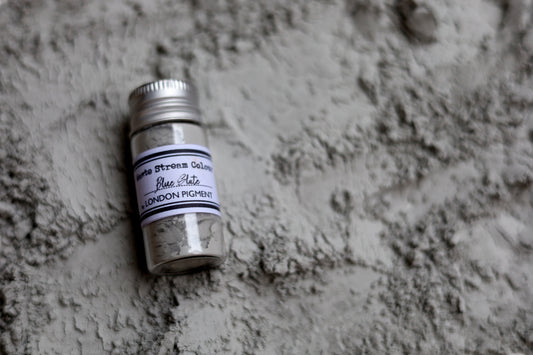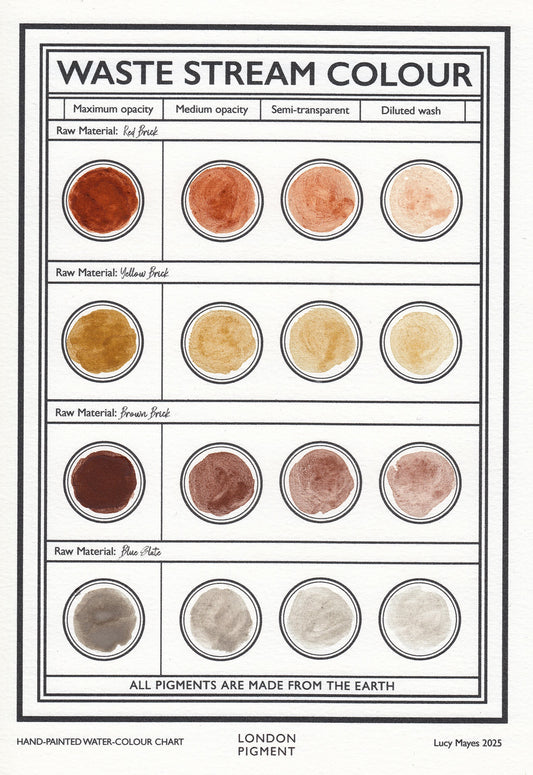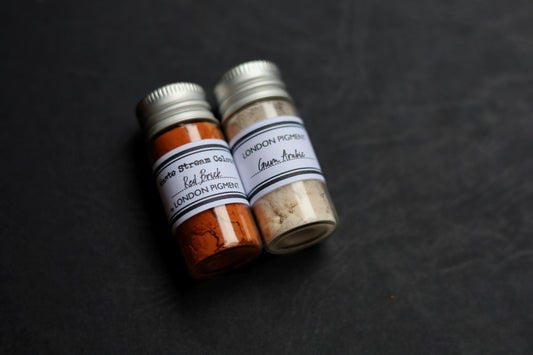Biogenic Ochre
Four species of bacteria aid the process of rusting, or the laying down of solid iron oxide. These organisms consume dissolved iron in water sources, and in doing so precipitate the iron as solid particles that take the form of long nanoparticle tubes. By collecting water from rivers and streams containing these commonly occurring bacteria, they can be kept in conditions to create biogenic ochre. Alternatively the iron ‘sludge’ could be collected, washed and calcined to create luminous orange and red shades.

Biogenic Ochre Pond, Hollow Pond, Whipps Cross, London, 2023.

Biogenic Ochre Deposits II, Hollow Pond, Whipps Cross, London, 2023.

Biogenic Ochre Deposits, Hollow Pond, Whipps Cross, London, 2023.
 Rust From Canal Motorbike Remnant 2023 (detail), Hackney Marshes, London, 2023.
Rust From Canal Motorbike Remnant 2023 (detail), Hackney Marshes, London, 2023.

Rust From Canal Motorbike Remnant 2023, Hackney Marshes, London, 2023.
 Biogenic Ochre Pigment Sample (unprocessed), Hollow Pond, Whipps Cross, London, 2023.
Biogenic Ochre Pigment Sample (unprocessed), Hollow Pond, Whipps Cross, London, 2023.
Waste Stream Colour Products
-
Waste Stream Watercolour Complete Set
Regular price From £70.00 GBPRegular priceUnit price per -
Blue Slate Pigment
Regular price £15.00 GBPRegular priceUnit price per -
Waste Stream Colour Chart
Regular price £15.00 GBPRegular priceUnit price per -
Waste Stream Watercolour Duo Set
Regular price £30.00 GBPRegular priceUnit price per



